Your Choice
To those readers not in WATAG’s local area, please forgive us for unashamedly promoting something very local, but it’s Whitehorse Council election time.
And 47 hopeful candidates are vying for just 11 Councillor positions – one for each of the new 11 Wards.
Covid-19 restrictions has made normal campaigning impossible. So how will voters choose between them?

We thought you’d like to know their thoughts about issues such as:
- council consultation with the community
- walking and cycling, cycle lanes, paths in parks
- support for small business
- planning and development, tree cover, multi-units
- re-purposing street space for café/restaurant use
- rates and budgets
So we asked those questions in an online survey, and we’ve published the results here.
Together with our friends at CROWAG, we’ve walked the streets, as part of our allowed exercise, and because Active Transport is what we do, and we’ve circularised 12,000 homes in Whitehorse with a flyer giving the link shown below.
Click here to read the candidate responses.
A majority of candidates participated in the survey. They were happy for voters to know their values. (Some were very happy at WATAG’s action to inform the community.)
Others were obviously unimpressed at being asked to say what they think, and disappointingly, three out of nine retiring Councillors who are re-contesting, didn’t answer the survey. And two new contenders wrote and said they didn’t want to participate.
WATAG thinks it’s sad when those aspiring to represent the public don’t want to tell the public their views.
As well as individual responses to the questions. we’ve summarised the collective views of Councillor candidates. There are strong points of agreement on several matters. Some of these conflict with the way Council officers currently see the Council’s role and its interaction with the community. WATAG hopes that the new group of Councillors will stick with their collective views and ensure that community values prevail in the future.
Here’s what else is in this edition
- Your Choice
- Well done Whitehorse
- Living on a safe street
- Do you keep good company?
- School travel
- Footpath width and walkability
- Walking and cycling – which one prevails?
- A bicycle has always meant freedom!
- Who invented the bicycle?
- An OLD favourite?
- Or EVERYONE’s favourite?
- Power and responsibility
- Walking: best, free and healthiest
- Active Transport is healthiest
- Driverless cars or less car drivers?
- Dumb traffic lights
- How to build a car-lite city
- Car-lite city or light car city?
- Do YOU like being taken for a ride?
- Are suburbs unsafe for kids?
- Is 30km/h what we need?
- BikeSpot Survey 2020
- Interested in being Active too? Here’s how
- Some questions for YOU
Well done Whitehorse
WATAG has been advocating to Whitehorse Council for several months now to embrace Tactical Urbanism. (See last newsletter Streets for people). We’ve advocated for the re-purposing of street space, now used by cars, to enable covid-safe outdoor dining and safer Active transport options to get there.

Whitehorse Council has taken the first important steps towards enabling this kind of re-purposing to take place by setting pout new Outdoor Trading rules.
Their website says:
“…we want to make it as easy as possible for businesses to welcome the community safely back to the cafes and restaurants we know and love.
We’ve created free, fast-tracked COVID Response: Outdoor Trading Permits that provide hospitality venues with more options to trade safely.
Our temporary extended outdoor trading permits allow hospitality venues to:
- expand onto footpaths
- take over on-street car parking space immediately outside their business
- join with neighbouring hospitality businesses to take over sections of on-street car parking, footpaths and (in some cases) street space
Extending outdoor trading will help hospitality businesses cater to more customers and operate viably within the health restrictions advised by the Victorian Government.”
We say – WELL DONE WHITEHORSE
Living on a safe street
We’d all like to live on a safe street. A place where you can walk, the kids can play, and where it’s safe to ride a bike.
What makes a street safe, that’s the question?
The simple answer is to make them “people friendly” rather than giving preference to cars.
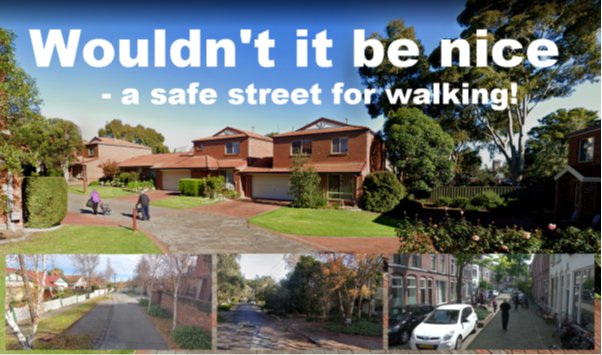
Click here for ideas about how to make it happen.
Now you’ve read about it…if you’d like a safer street, and all the benefits of an Active Transport oriented society, you too can do something. You can tell your local Council what you think, help vote in Councillors who have policies which encourage this, and get in touch with WATAG and add your voice to ours.
To find what Council candidates in the October 2020 elections think about this kind of policy, you can see what they think here.
If you have a view, click to leave a reply or comment
Do you keep good company?
You probably won’t be surprised to find that lots of people think the same as you do about wanting:
- safe streets
- more Active Transport opportunities
- safe routes to school
- community consultation


Check out Streets Alive Yarra for statistics which will show you are not alone!
School travel
Thankfully Covid restrictions have eased a little and children can go back to school now.
But how will they get there and back. Will it be there be the same old misconceptions about safety? The overwhelming benefits of independent travel for their children need to be much better understood. Here’s some information to help.

There are lots of myths and misconceptions about why fewer children are walking and riding to school. Here’s how to challenge those ideas published by the City of Greater Geelong.
Refer also to our article last year Australian and New Zealand teenagers among most inactive in the world
If you are a parent of a school child, a school staffer or a Council administrator, please watch this video. Journeys CAN be made much safer.
Footpath width and walkability
Your Council is responsible for providing footpaths which are safe and in good condition. Best practice footpath widths are recommended by Transport for NSW in their Walking Space Guide.

Now take this short tutorial on “Walkable 101: The Basics” and assess how walkable the footpaths are in your area.
Walking and cycling – which one prevails?

Suzanne Audrey says we need to stop talking about “cycling and walking” in one breath as if they are the same.
That certainly doesn’t mean we should stop talking about cycling, or about walking. We just need to admit they are completely different activities.
Suzanne thinks that the problem with talking about “cycling and walking”, particularly in relation to transport policy, is that the conversation invariably focuses on cycling.
You might disagree. Check out Suzanne Audrey’s reasons here in an interesting article recently published in Bristol 24/7 (Wednesday Aug 5, 2020).
Read her ideas and tell us your thoughts.
If you have a view, click to leave a reply or comment
A bicycle has always meant freedom!
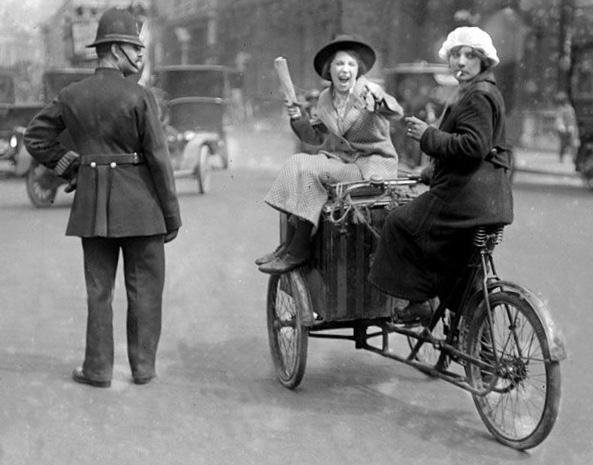
Who invented the bicycle?

On June 12th 1817 Baron Karl Friedrich Christian Ludwig von Drais rode his two-wheeled invention, the first Velocipede, five miles from the centre of Mannheim and back in less than an hour. It was basically a bicycle without pedals that one pushed along the ground but it was still much faster than walking. He called it a Laufmaschine (running machine in German) but the press named it a Draisine after the inventor.
Baron Karl von Drais needed a way to replace his horse; today we need a way to replace the car.
Read this really interesting article from Treehugger in 2017, celebrating the 200th birthday of the bike.
An OLD favourite?

From a LinkedIn post by Chris Bruntlett. Chris is the Marketing and Communication Manager at Dutch Cycling Embassy, and the co-author with his wife Melissa, of the highly recommended book “Building the Cycling City: The Dutch Blueprint for Urban Vitality“. Ask for it at your local library.
Or EVERYONE’s favourite?
Power and responsibility
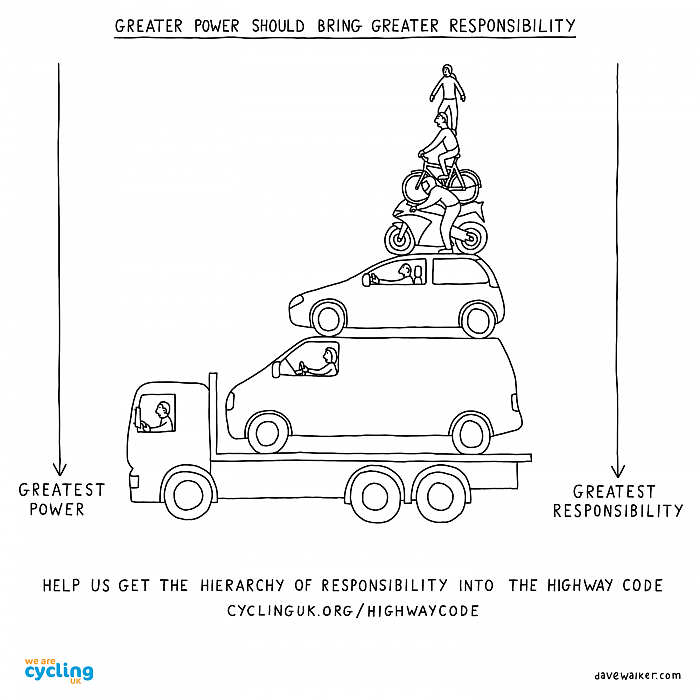
We need this hierarchy in Australia too!
Walking: best, free and healthiest
Walkability is a crucial first step in creating sustainable transportation in an urban environment. It’s the most common form of transport in the world. We all do it a little differently but it is our most common way to travel. Walking is immediate, carbon free, and free. A shift to walkable communities is a shift to healthier populations, a cleaner environment, and more efficient urban spending.
When it’s so right to walk, shouldn’t every city promote the Right to Walk?
Sourced from ITDP.
Active Transport is healthiest

“Commuting undertaken totally or partially by bicycle was associated with a lower risk of a range of adverse health outcomes. Commuting by walking was associated with a lower risk of adverse CVD outcomes. The findings, if causal, suggest population health may be improved by policies that increase active commuting, particularly cycling, such as the creation of cycle lanes, cycle hire or purchase schemes, and better provision for cycles on public transport.” BMJ 2017;357:j1456
The study published in British Medical Journal shows that people who commute by bike have:
- 52% lower risk of death from heart disease;
- 46% lower risk of developing heart disease;
- 40% lower risk of death from cancer
- 45% lower risk of developing cancer
Shouldn’t we ALL be doing our bit to promote Active transport so we can ALL be healthier?
Driverless cars or less car drivers?

Driverless Cars Emulsion – whatever is this?
It’s an initiative for which the premise was that the lovers and haters of driverless cars were like oil and water – they existed largely in their separate echo chambers at the mercy of confirmation bias and did not mix with one another. This was making no sense (and still doesn’t). Being able to confront wicked problems such as what driverless cars might mean for our future requires diversity of views and constructive dialogue. What was needed was an emulsifier to allow the oil and water to mix together. And so the idea of the Driverless Cars Emulsion was born.
Check it out here.
Dumb traffic lights
– Could they be smarter?
How to build a car-lite city
Advice from a city administrator
You hear a lot of messages from advocates such as WATAG, and many others, telling those in power how they should do things. But we don’t have to actually implement them or work out how pay for them! Is there another perspective we should consider?
This video is interesting because it’s from a City Administrator, and former National Minister who HAS had to do these things. Its a video of a presentation made by The Deputy Mayor of Amsterdam to the Singapore Government.
If you have any role as a government administrator, this video is especially for you. For the rest of us its very interesting and really worth a look.
Car-lite city or light car city?
Could this be your next e-bike?
Do YOU like being taken for a ride?
Are suburbs unsafe for kids?
Have a look at this video about one family who moved from Canada to Netherlands so their kids could grow up in a country that has the happiest children.
Now check out this very short video (43 seconds!)
What does Unicef say?
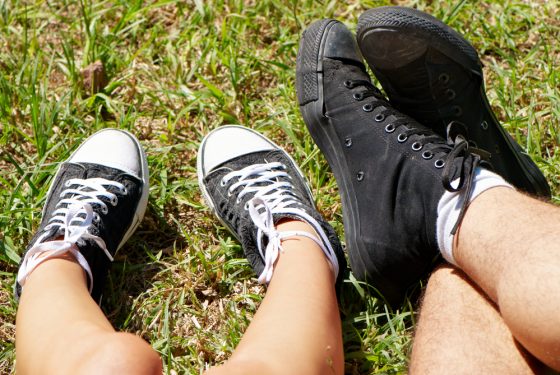
“Children in the world’s richest countries, including the Netherlands, are grappling with mental health concerns, obesity and poor social and academic skills, according to a new study published on Thursday by the UN children’s fund Unicef. Nevertheless, the well-being of Dutch children remains top of a list of the 41 most prosperous countries in the world, Unicef said. Denmark and Norway are in second and third place.”
Read more at DutchNews.nl
Is 30km/h what we need?
The facts are there.
It’s not fake news!
Research projects, studies and common sense too, all tell us that slower road speeds will make our roads far safer as far as potential death and injury resulting from a car hitting someone.

There’s a whole website dedicated to advocating for 30km/h in our suburban streets. Check here at https://30please.org/. Its a great resource.
BikeSpot Survey 2020
BikeSpot 2020 results are in!
They received over 31,000 submissions (spots, comments and ‘likes’) overall in the 2 month period between 31 March 2020 and 31 May 2020. This is an increase of 260% from of the BikeSpot project conducted back in 2016.
The top 5 findings are:
- 1. Cyclists and drivers want dedicated SPACE from other transport modes

- 2. Traffic speed causes the most STRESS for cyclists
(followed by ‘Too much vehicle traffic’ and ‘Car dooring’ fears).
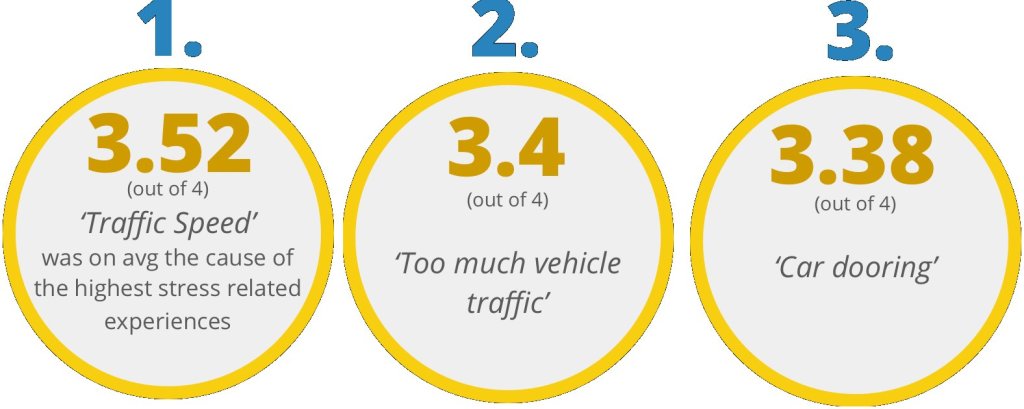
- 3. Want more confident riders? — Build a CONNECTED network
‘Interested but concerned’ cyclists (least experienced / least confident cyclists) rank on average ‘Cycle lane ends’ as their top stress experience.
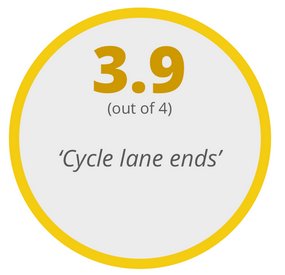
- 4. FEAR of car dooring — a daily concern
Top submitted fears that cyclists experience multiple times per week.
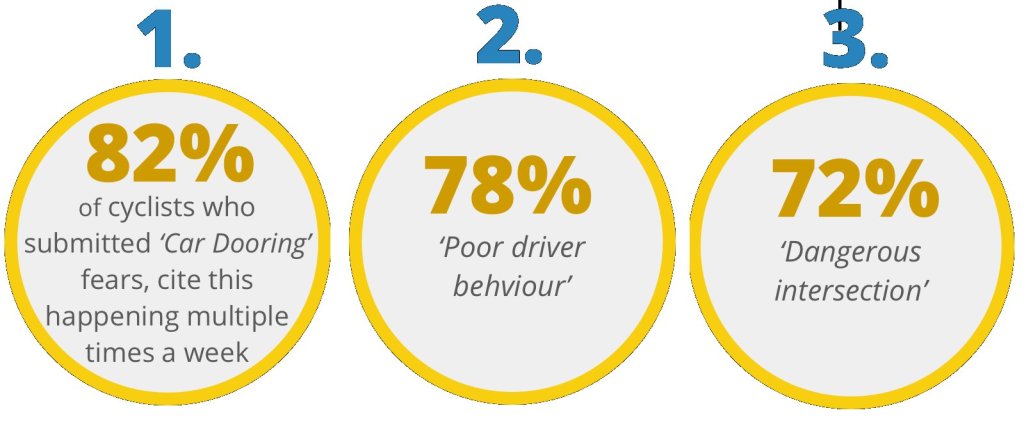
- 5. Top 10 UNSAFE Spots & Top 10 SAFE Spots
Click for the details of the top 10 SAFE and UNSAFE spots.
Interested in being Active too? Here’s how
Join a local group that enables you to be active and social too!
- Like walking (and some bike riding too)?

2. Or is regular bike riding your idea of fun?

Whitehorse cyclists
We are a happy group of men and women who love the outdoors, enjoy riding bicycles and thrive in other people’s company.
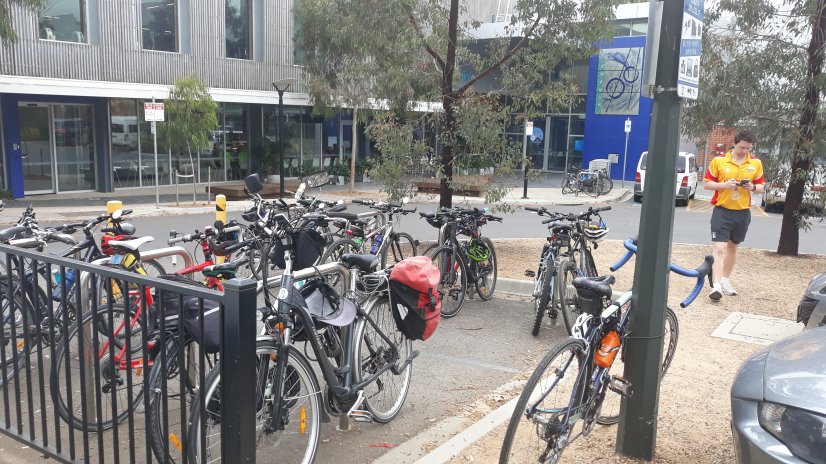
Bike parking is easy for morning tea time at Aqualink Box Hill during a Whitehorse Cyclist’s Easy Tuesday ride.
Around 25 riders getting fitter and enjoying the company of friends.
Good for local business too by putting money back into the local community.
Some questions for YOU
- If you HAVEN’T received these newsletters regularly every two months, this question is for YOU.
Did you enjoy THIS newsletter, and would you like to read future newsletters every two months?
Thanks for answering!
.
and…
2. $$$$ – Annual Memberships are now due. Click here to pay a membership.
and…
3. More $$$$ – like to make a Donation to help us keep the newsletters coming? Click here.
FINALLY – until next time that is!
In these Covid-19 times:
- Keep safe
- Keep healthy and active
- Keep thinking of ways YOU can help make Active Transport a reality for all.
Tell us what you think about articles in the newsletter in the “Leave a Reply” box below.





Jampacked with information – I was thinking I’d emigrate to NZ – perhaps it will have to be the Netherlands instead! Too old to wait for so much change here!
LikeLike